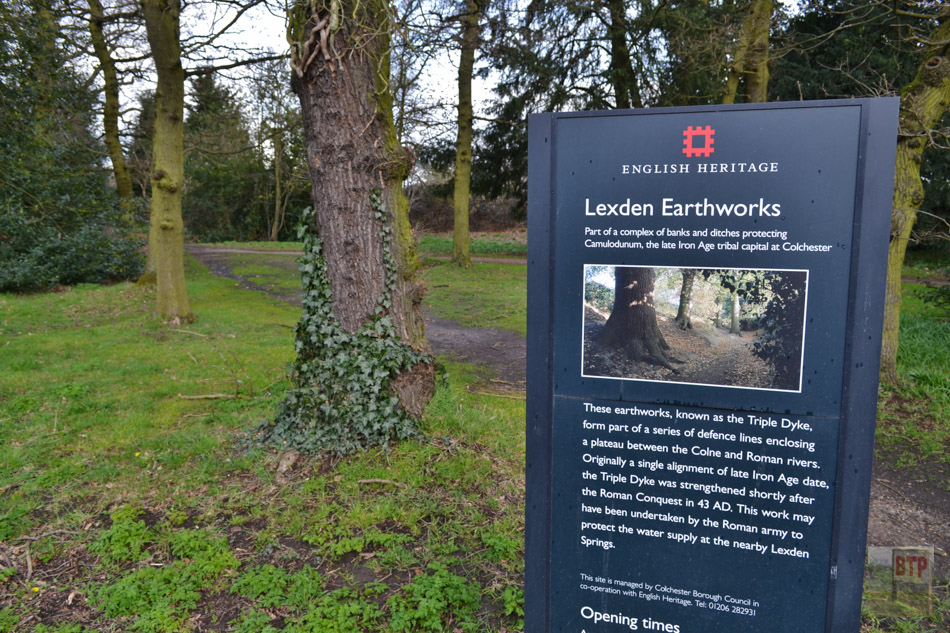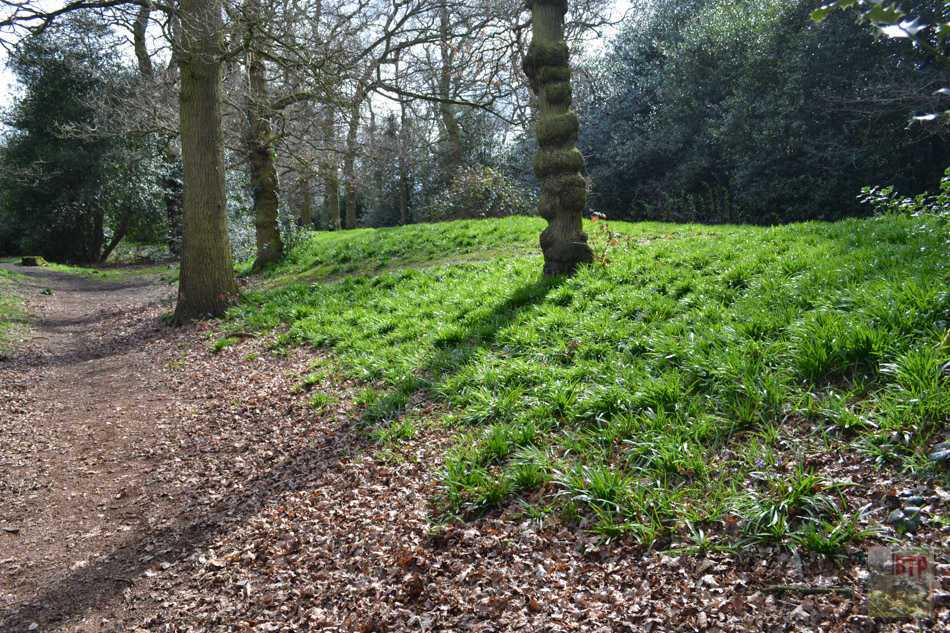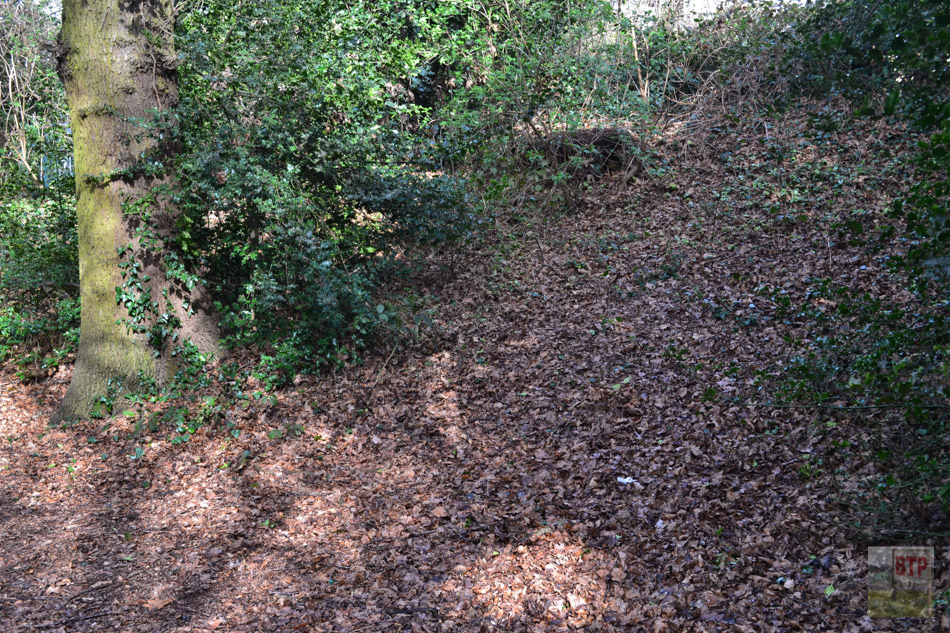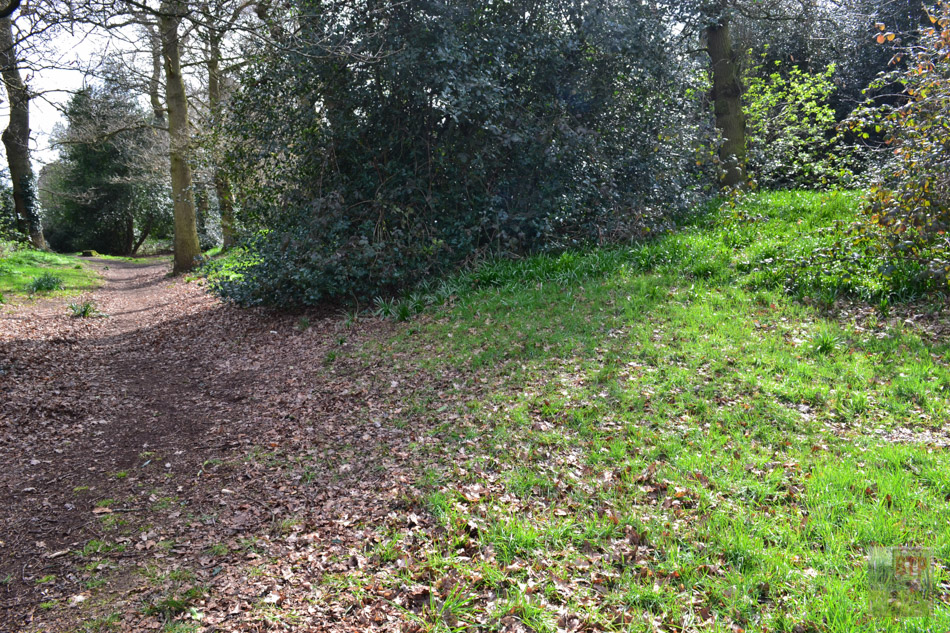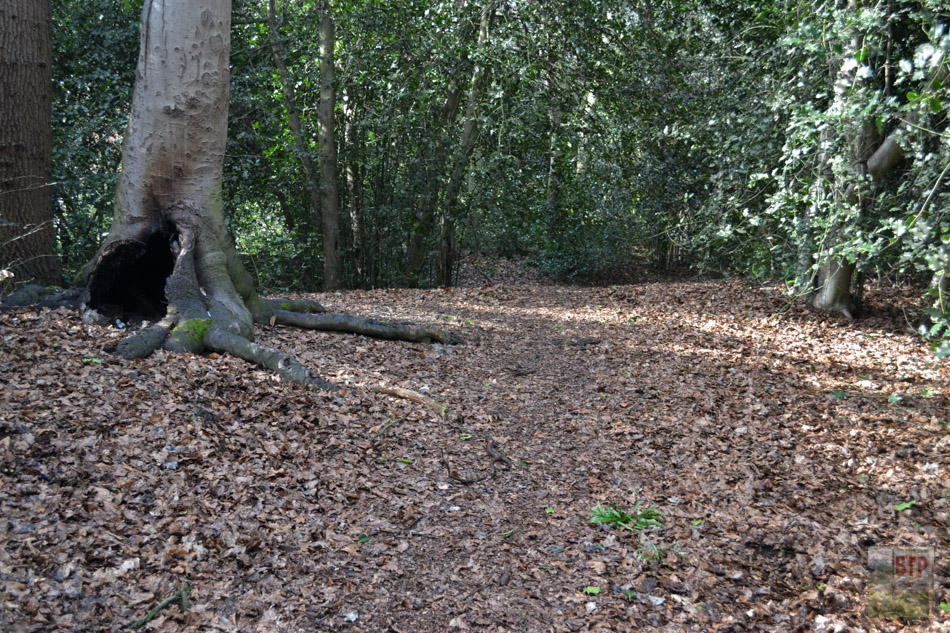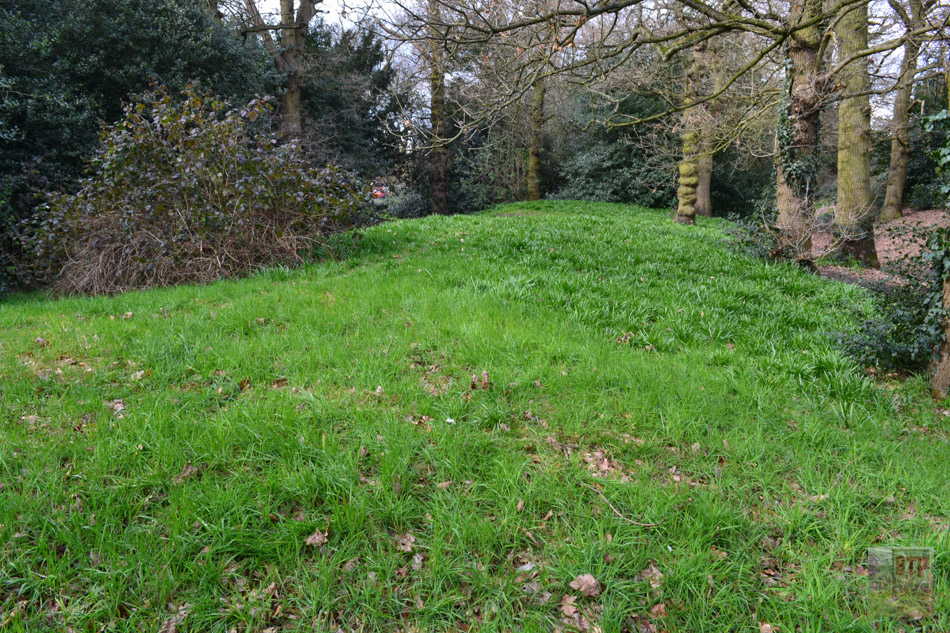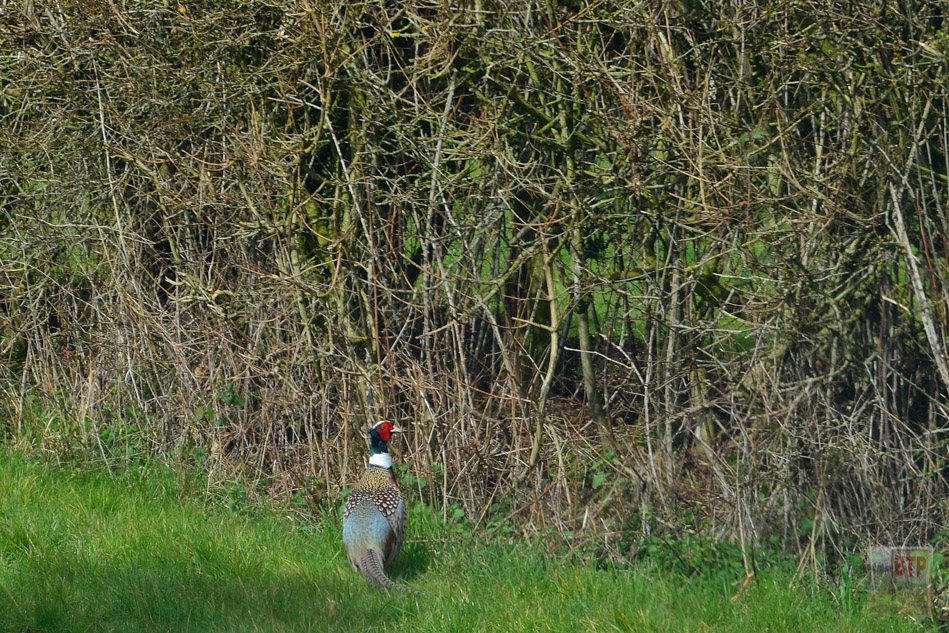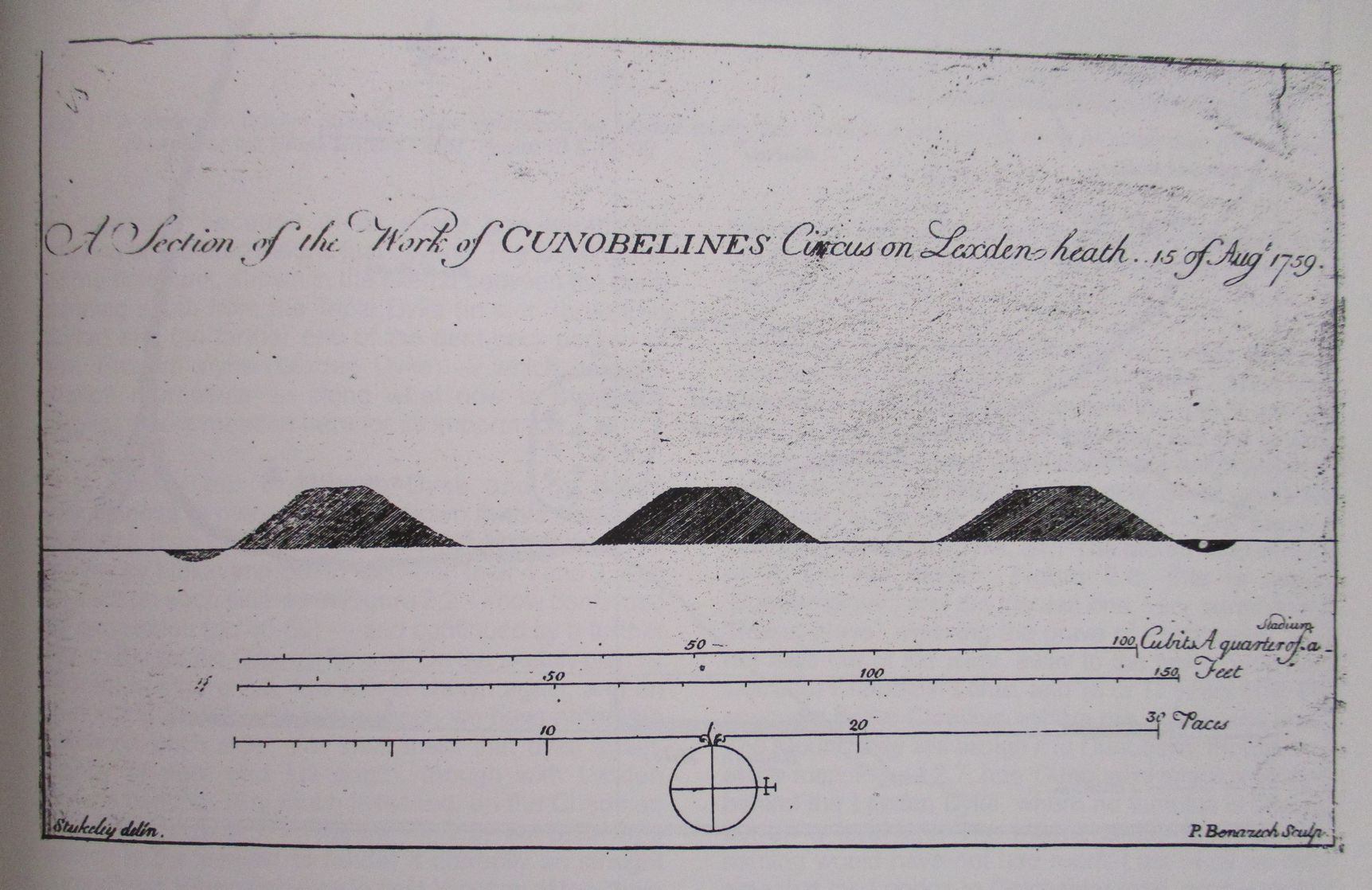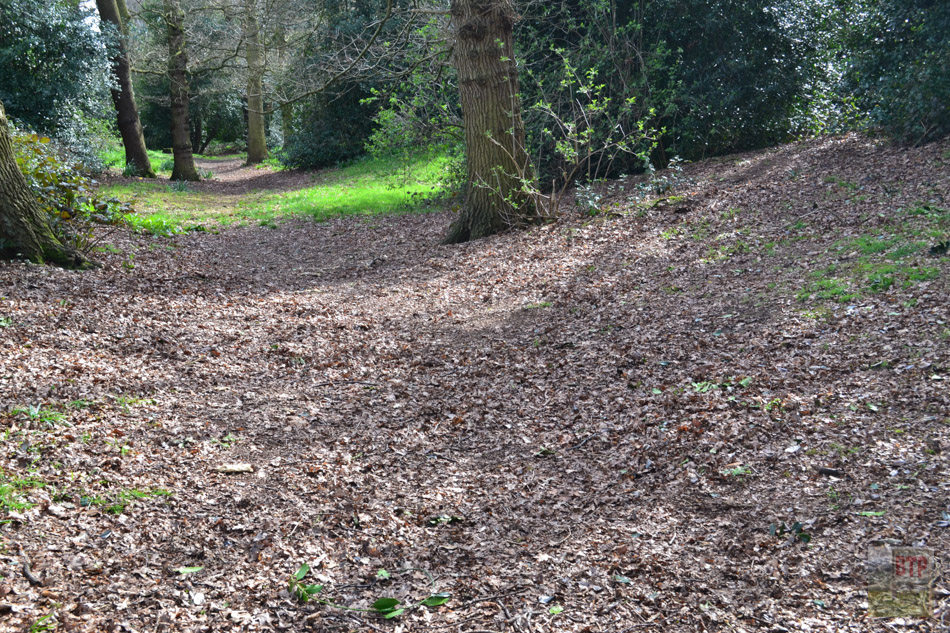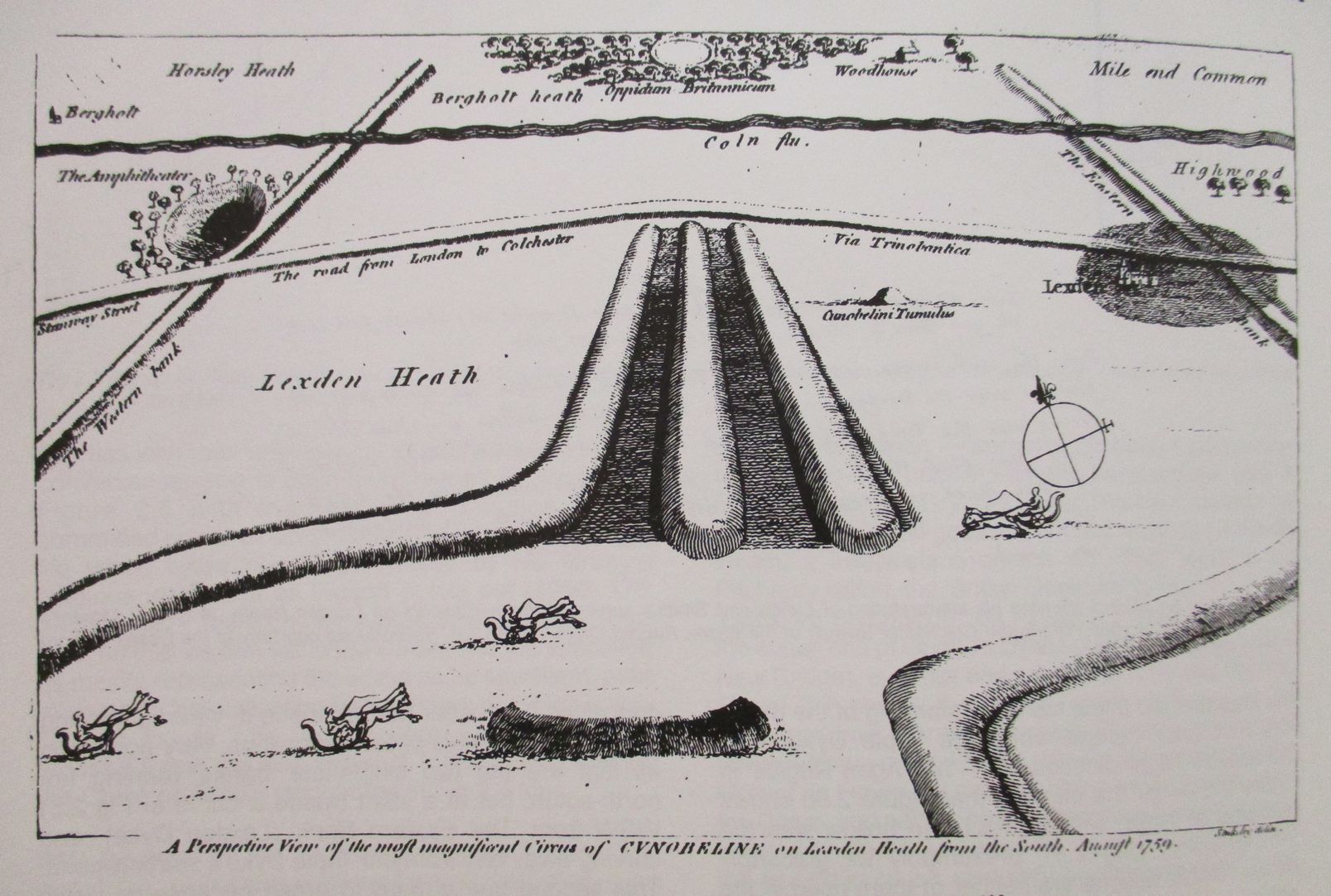On the edges of Camulodunum; ancient Colchester, there once stood an Iron Age defence system – part of a greater one spanning the circumference of the town. This is now roughly where Lexden is. Earthern ramparts defending the west side of Camulodunum were built roughly between 25 and 1 BC, and still remain today at Bluebottle Grove. The site today is signposted by English Heritage. Although there isn’t much to see at first in this unsuspecting patch of woodland, clear ditches and earthern wall-like mounds can be made out with a little imagination. These are indeed the remains of the ramparts, and they are among the few surviving Iron Age defences remaining in Britain. The outermost rampart is the most visible today; Gryme’s Dyke, and stretched between the River Colne and the Roman River. It appears first as a hedge south of the London Road, and then as a visible bank with a significant ditch on its west side. Christian locals in the post-Roman or Medieval era referred to the dyke as ‘Gryme’s’ because this was a name for the Devil, and they did not know who built these ditches and when; accounting it to either a pagan or supernatural force. To the east of Gryme’s Dyke lies Triple Dyke; part of an earlier defence system extending south to Bluebottle Grove. Numerous important archeological finds have been uncovered in the area. Nearby is the Lexden Tumulus; the largest of several burial mounds for the deceased leaders of Camulodunum. It is supposed to contain the grave of Cunobelinus or Cymbeline, and can be seen at Fitzwalter Road today. Further away lies a large gravel pit called ‘King Coel’s Kitchen’, and this was probably part of a crossing system over the dykes where roads to Cambridge and London converged.
The graphics below were produced by Sir William Stukeley in the mid-18th Century. In 1759 he believed he had found the sites of an ancient amphitheatre and circus, which are now known to instead be the defence system described. The circus would be discovered only in 2004 much further away.
Sources: Historic England & English Heritage, The Megalithic Portal, Stukeley images from The Colchester Archaeologist (https://www.thecolchesterarchaeologist.co.uk/?p=32529)
This entry was posted in Location Report
